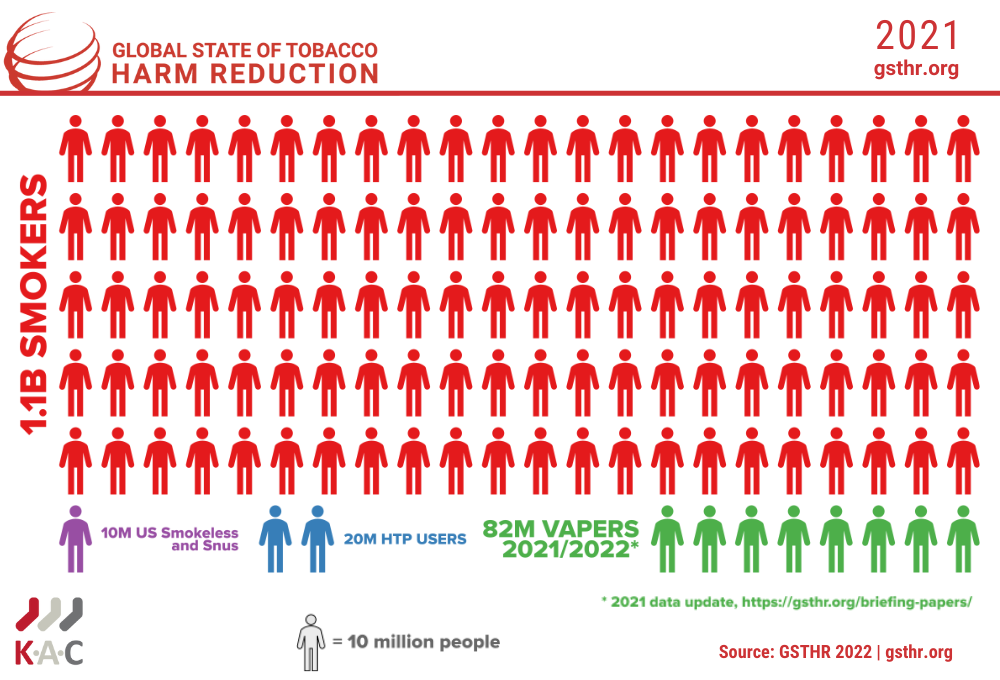

There were 82 million vapers in the world in 2021, according to new data published by the Global State of Tobacco Harm Reduction (GSTHR).
The briefing paper, which classifies nicotine as one of the world’s most popular drugs alongside alcohol and caffeine, assesses that the global number of vapers in 2021 had increased rapidly—up by about 20 percent since 2020, when the estimated total was 68 million. GSTHR updated its calculation using information from the 2021 Eurobarometer 506 survey, in which the European Union surveyed most of its member countries on tobacco use and attitudes. An additional 30 million people worldwide are estimated to use different tobacco harm reduction options, in the form of either smokeless tobacco or heated tobacco products.
But there are still an estimated 1.1 billion smokers across the globe, 80 percent of whom live in low- and middle-income countries. Smoking remains the number one cause of preventable death on the planet.


“As this updated data … shows, consumers find nicotine vaping products attractive and are switching to use them in increasing numbers worldwide,” said Gerry Stimson, an emeritus professor at Imperial College London and the director of Knowledge-Action-Change (KAC), a public health group that puts out GSTHR. “This is in spite of prohibitive policies in many countries who follow the World Health Organization’s anti-scientific stance against tobacco harm reduction, thanks to Michael Bloomberg’s billions and his personal zeal for a war on nicotine.”
“Safer nicotine products should be accessible and affordable to people around the world who want to switch away from deadly combustible cigarettes.”
As the paper mentions, many former smokers are driving vaping’s rise. By way of example, GSTHR cites data from the United Kingdom that show the proportion of the adult population vaping rose from 1.7 percent in 2012 to 7.1 percent in 2019. British health authorities encourage the use of vapes as a means to quit combustible cigarettes, and past data from the country showed that the overwhelming majority of vapers were either ex-smokers or current smokers seeking to switch. There’s wide scientific consensus that vaping is much lower-risk than smoking; the UK’s leading health agency estimated that vapes are about 95 percent less harmful.
Yet over the years, the World Health Organization (WHO) has been antagonistic toward tobacco harm reduction. With the exception of a handful of countries, many governments remain hostile as well.
“In order to reduce the devastating harms from smoking that lead to 8 million deaths every year, governments must be pragmatic,” Stimson said. “As a tool to reduce harm, nicotine vaping products, as well as other safer nicotine products, should be accessible and affordable to people around the world who want to switch away from deadly combustible cigarettes.”
Photograph by Vaping 360 via Flickr/Creative Commons 2.0. Graphic by the Global State of Tobacco Harm Reduction.
The Influence Foundation, which operates Filter, has received grants and donations from KAC. Both KAC and The Influence Foundation have received grants from the Foundation for a Smoke-Free World. Filter‘s Editorial Independence Policy applies.